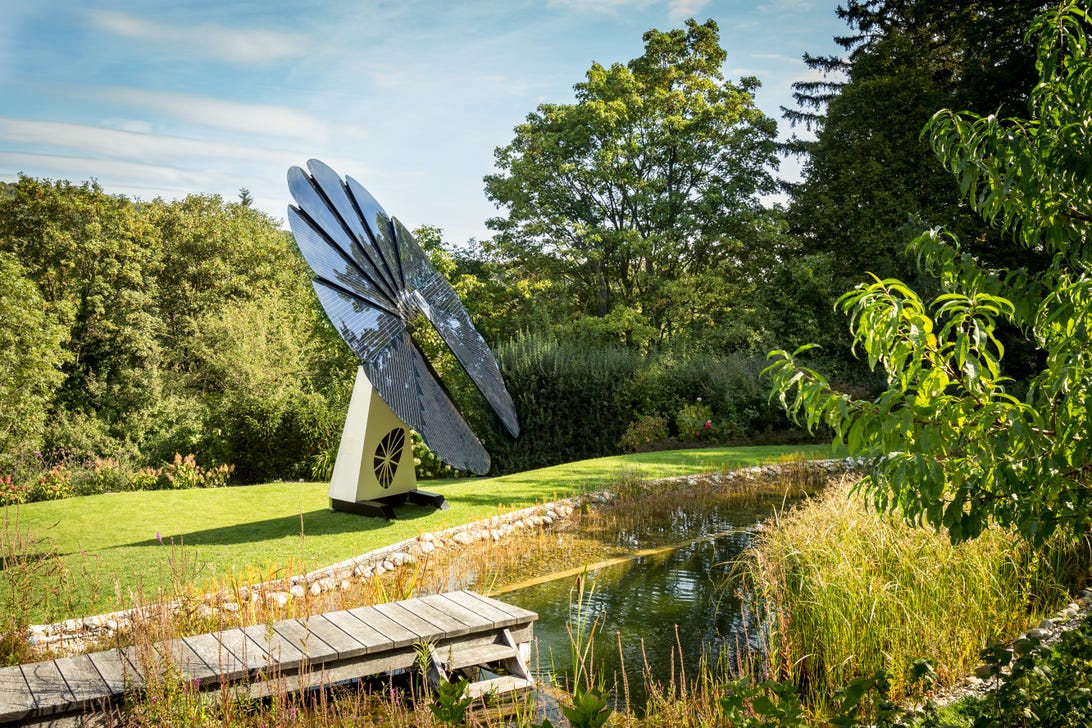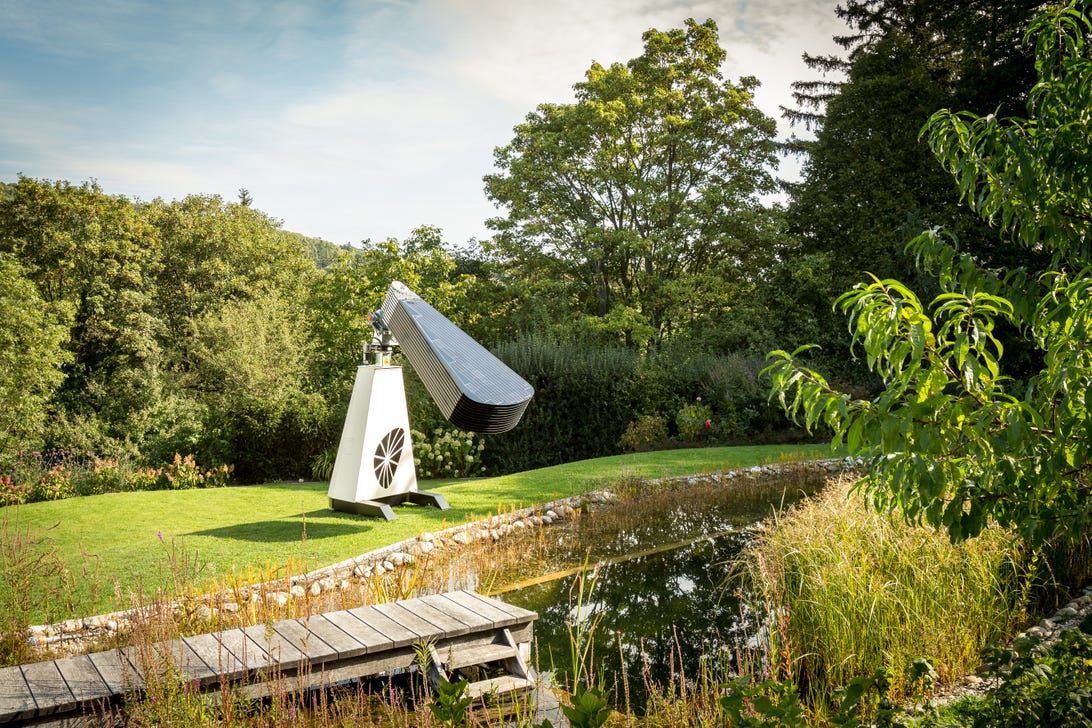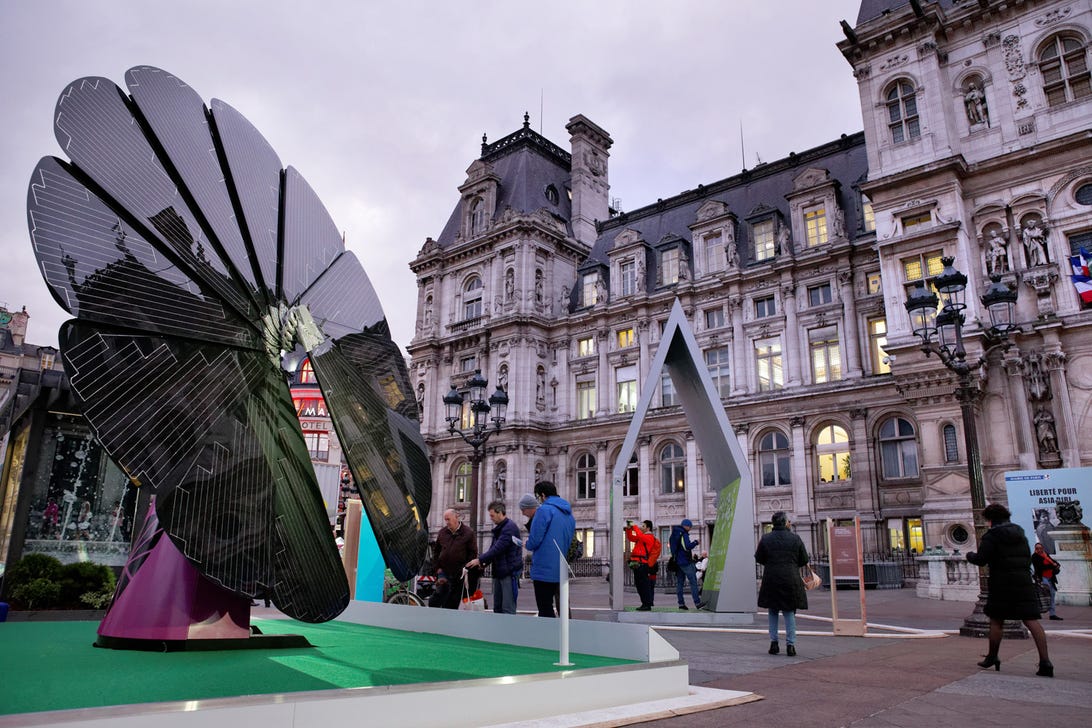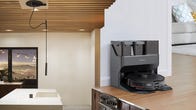
Smartflower solar panels unfurl in the morning and track the sun across the sky.
SmartflowerIn the residential solar industry, one company has charted a different path. It’s producing solar electricity, not with rooftop panels or a traditional ground-mounted rack, but with solar powered sunflowers.
Smartflower Solar offers what it calls “sculptural” solar: An array of panels that unfurls in the morning, tracks the sun across the sky and folds up at night. It looks like a large, mechanical flower. Smartflower turns solar into a statement as well as a conversation piece and does so with a pretty simple installation process. While some customers may prefer the look of Smartflower, it comes at a premium.
What do I get from Smartflower?
Smartflower’s solar installations are ground mounted. The panels, inverter and optional battery are part of one freestanding structure that is delivered fully assembled. Installation is about as close to plug-and-play as any major solar installation can claim.
Smartflower stands about 16 feet tall when its 12 solar petals are fully opened. The inverter is housed within the pedestal (the “stem” of the Smartflower) and comes from either Fronius or Sunny Boy. The inverter will have an efficiency rating of 96.5%, said Jim Gordon, Smartflower Solar’s CEO.
The panels operate with dual axis tracking, which means they follow the sun to always face it at an ideal 90 degrees. It has a peak capacity of 2.5 kilowatts, but because they can always directly face the sun, Smartflowers produce about 40% more electricity than similarly sized rooftop solar arrays, Gordon said. Smartflower’s website says one system will produce 4,000 to 6,500 kilowatt hours per year, depending on the weather and location.
Smartflower also offers a Smartflower Plus, which includes energy storage in Simpliphi batteries. The three lithium-ion batteries hold 11.4 kilowatts of energy.
You can monitor the whole system through a smartphone app that allows you to view your energy production and open and close the system manually.
Smartflower will open and close automatically to start and end each day, but will also close in the event of high winds as measured by a wind meter the company installs about 10 feet from the solar array. At sustained gusts of 30 mph, Smartflower will lay horizontal, but open. At sustained gusts of 40 mph, the array will close up and stow itself until it’s safe to open again. Whenever a Smartflower closes, it also gets cleaned. Each panel has small, panel-safe brushes attached to its back that sweep the surface of the panel each time the panels close.
Smartflower is covered by a few warranties. The system is guaranteed to produce at 80% of its rated production at the end of 25 years. The inverter is covered by a 10-year warranty. The entire system is covered by a two-year system warranty, which covers maintenance on the rest of the system.
Is Smartflower Solar a good deal?
Purchasing a Smartflower is bound to be more expensive than roof or ground mounted panels. According to Gordon, most of Smartflower’s clients are commercial customers. In those cases, a large, striking solar sculpture makes a statement about a company’s commitment to sustainability. Companies have been willing to pay a premium for the messaging.
Gordon didn’t share the price of a Smartflower, saying they vary from installation to installation, but mentioned the cost was around $30,000 in a 2019 segment on the show This Old House. While Smartflower doesn’t easily compare to a rooftop solar installation, if your motivation is to get solar power for the cheapest possible price, Smartflower isn’t your best bet. With a price of $30,000 and production near that of 4.5 kilowatts, Smartflower costs over $6.50 per watt. This is well over the national average for rooftop solar, which the National Renewable Energy Laboratory reported $3.80 per watt in 2020. Other sources report significantly lower numbers. EnergySage reported average installation costs by state ranged from $2.33 per watt in Arizona to $3.43 in Washington, DC. When you purchase a Smartflower, like other solar installations, you’ll be eligible to receive the federal solar tax credit, which currently refunds you 26% of the cost of solar and battery.


Smartflower closes when the sun goes down.
SmartflowerGordon agrees that Smartflower isn’t the cheapest option out there, but argues that price per watt doesn’t accurately reflect all the benefits of the system’s dual-axis tracking. Because the system can shift to face the morning and the evening sun, Sunflower is likely to produce more energy at those times of day compared to fixed arrays oriented south. This could be an advantage as more utilities add time-of-use pricing that raises prices in the early evening. Smartflower may be able to offset more of the high cost energy than other solar options. The extent of this advantage will depend on the fixed array a Smartflower is replacing, but fixed, rooftop arrays will likely continue to be the cheaper option, even with Smartflower’s tracking.
For some customers, there’s additional peace of mind that they can install solar without messing with their roof, Gordon said. While solar installers typically guarantee their installation won’t cause leaks for a number of years, a ground mount might be an attractive option to homeowners who want to go solar before replacing their roof. Solar panels can be removed and reinstalled for roof repairs, but usually at a cost.
Ultimately, people choose Smartflower to make a statement about their sustainability and for its aesthetics. Smartflower can add to the look of a home without altering the appearance of the actual structure, Gordon said.
Does Smartflower operate in my state? How do I order?
If you want Smartflower, you can almost certainly get it. Not only does the company operate across the United States, it installs Smartflowers around the world.
People interested in Smartflower can inquire online or with a phone call. The company then provides a virtual presentation to answer questions about the product. Because there’s no need to check on the quality of the roof, Smartflower can be sited remotely using Google Earth. (It needs about a 16-foot cube of free space to fully unfurl and track the sun.) The company then provides a written quote and, if the customer accepts, a Smartflower is shipped to them.


Installation takes an average of half a day, Gordon said. Installers dig a trench and lay wires and conduit from the house to the Smartflower’s location. The Smartflower is anchored to the ground with four large screws, though in some cases it’s affixed to a previously poured cement foundation. Many installations take less time than that. Because a Smartflower is simply bolted to the ground, it can easily be unbolted and moved to other locations. (It weighs 1,700 pounds, so “easily” is relative here.)
Because installing a Smartflower requires the same skills as installing more common equipment like a generator, finding qualified installers across such a wide geographical area is not difficult, Gordon said. Smartflower trains and certifies all its installers.
Is Smartflower the best choice?
If you’re looking for solar for your home, Smartflower will work best for people who love the unique look or want to make a visible statement about their energy use. While Smartflower is undeniably cool looking, for most homeowners, rooftop panels or a ground-mounted, fixed array is going to make more sense from a strictly financial perspective.
If you love the look and have extra money to spend though, you won’t be able to get Smartflower from any other company.
It’s worth noting that while this article is thoroughly researched, it doesn’t rely on any empirical testing I have done myself. It shouldn’t serve as a replacement for getting multiple quotes from local and national installers to find the solar solution that best fits your needs and your property.




